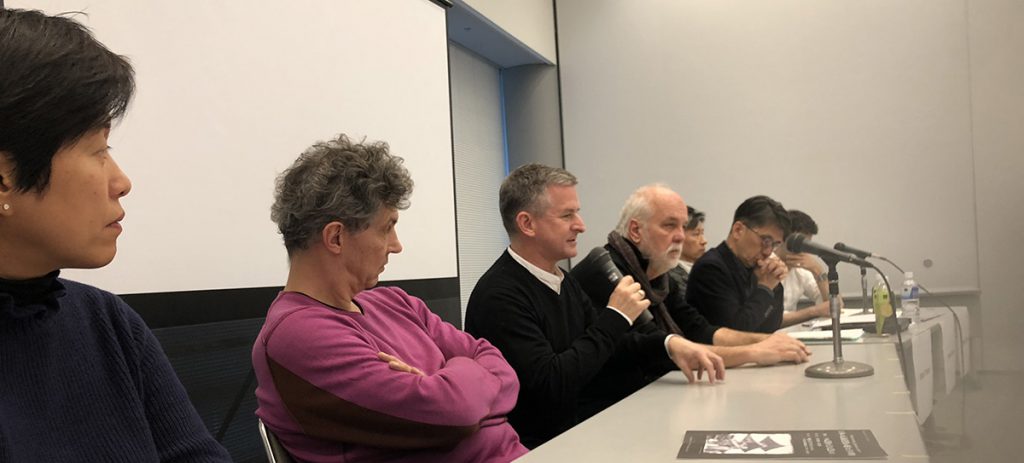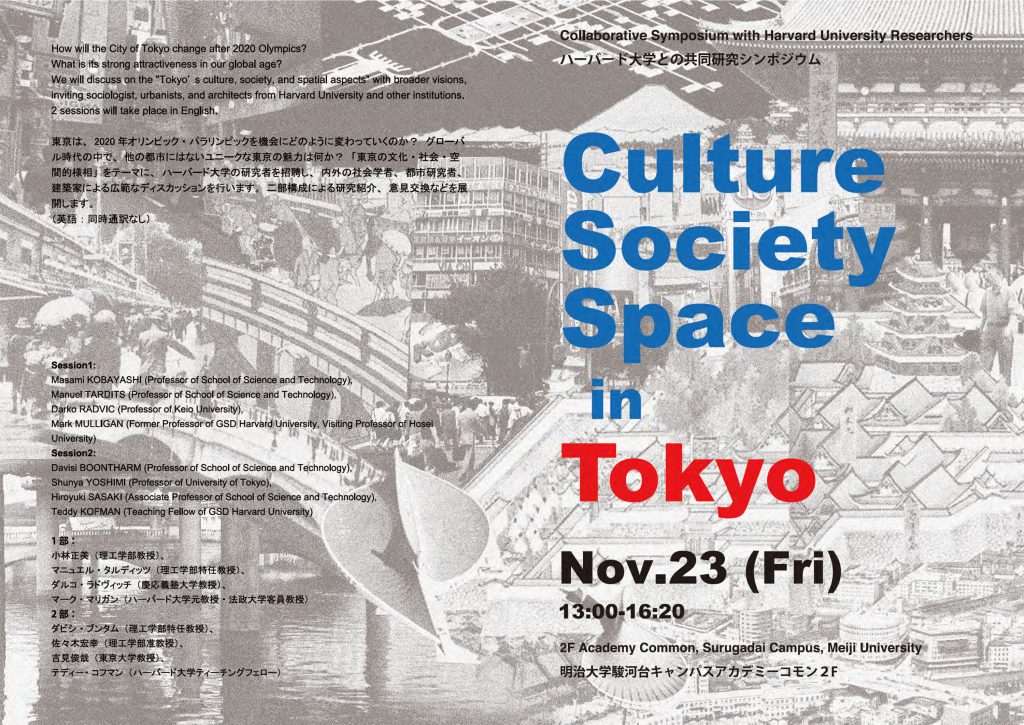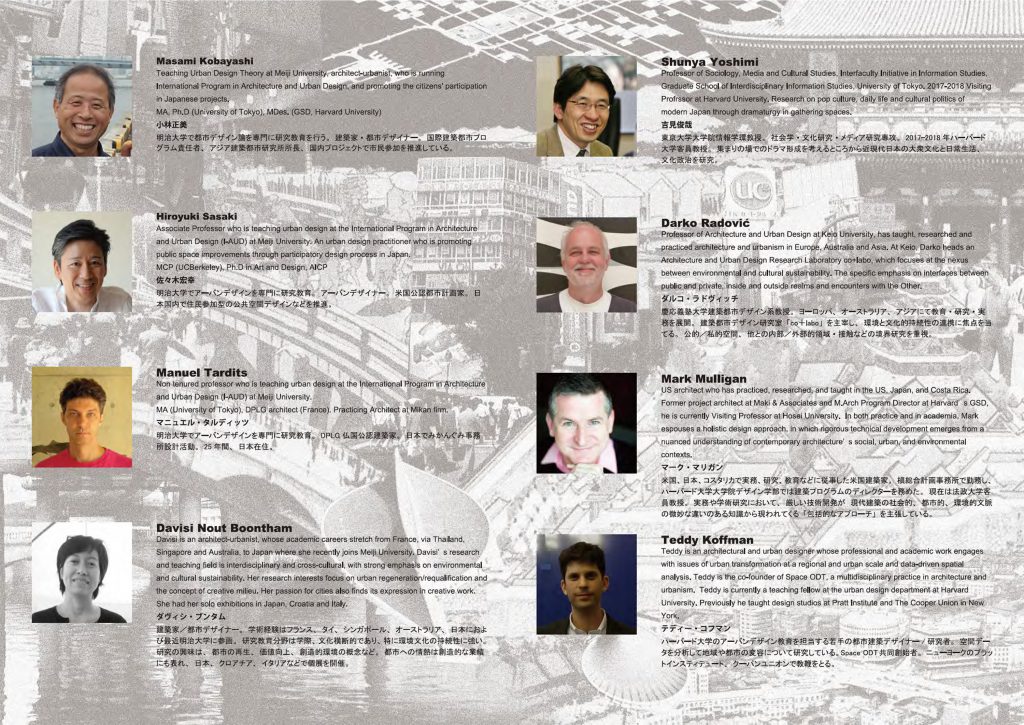【Theme】
Tokyo is changing. In this symposium, scholars from socio-spatial disciplines discussed several issues related to contemporary Tokyo especially how the city would become after the Olympics 2020. The symposium marks the beginning of the collaborative research project on Tokyo Studies by I-AUD staff members. It is divided in two sessions; the first one covers the overall Tokyo from past to present with the discussions on the contemporary issues. The second session discusses Tokyo at the scale of neighborhood, their characters and different research methods undertaking by our researchers.

【Presenter】
Session 1:
Masami KOBAYASHI (Professor, School of Science and Technology, Meiji University) – Chair of session 1
Manuel TARDITS (Professor, School of Science and Technology, Meiji University, I-AUD)
Darko RADOVIĆ (Professor, co+labo Radović, Keio University)
Mark MULLIGAN (Visiting Professor, Hosei University, former Professor at Harvard GSD)
Session 2:
Davisi BOONTHARM (Professor of School of Science and Technology, Meiji University, I-AUD) chair of session 2
Shunya YOSHIMI (Professor, Graduate School of Interdisciplinary Information Studies, the University of Tokyo)
Hiroyuki SASAKI (Associate Professor, School of Science and Technology, Meiji University)
Teddy KOFMAN (Teaching Fellow, Harvard GSD)
【Report】
The opening of the first session, Prof Kobayashi from Meiji University gave a brief introduction from Edo to Tokyo. His talk portrayed the different periods of urban development especially the brutal incidents that Tokyo suffered eg. big fire in 16xx, the Tokai earthquake in 1923 and the massive destruction during the 1945 bombings. Each catastrophic event brought new regulations and transformation that shaped Tokyo’s today.
Manuel Tardits shared his current research on Tokyo’s hinterland, an immense area around the outskirt of the megacity where urban and rural meet. These in-between spaces are under studied and today confront different challenges such as aging, shrinking and lost their characters.
Darko Radović from Keio University questioned the current big scale developments in Tokyo that is spreading at the alarming pace. He revisited Debord’s the Society of Spectacle and reflect into Tokyo’s situation. He reminded us to be aware of the onslaught of Globalisation especially the intense development for the Olympics that will affect the city and its economy after the games are over.
Mark Mulligan discussed his Tokyo Studies through the current Urban Design studio that he is running at Hosei university. Focused on the area near Haneda airport in Oota-ku, he investigated on the live-work quarter of the manual workers community.
The second session stated with Shunya Yoshimi from the university of Tokyo on Vitalization of Urban Heritage: two Tokyo Olympics and a vision for post 2020. He highlighted the distinct difference of urban policy and the Olympics legacy between the two games 1964 and 2020. Various neighbourhoods are targeted to be preserved and enhanced their identities. Different policies are implemented to achieve these goals.
Hiroyuki Sasaki presented his current research on the transformation of Cat Street in Harajuku between the two Olympics 1964 and 2020 focusing on the relationship of the transition of landuse and street types. He also presented his participatory design projects with the community in Harajuku.
Teddy Kofman shared his current research methods in urban studies involving spatial analysis of road network, data analysis and photographic study and interview. His target neighbourhoods are Shimokitazawa, Koenji and YaNeSen.
Davisi Boontharm discussed the important of subjectivity in urban research and focusing on the artistic sensibility in urban mapping. She shared her lived experience in the neighborhood of Jiyugaoka and how the artistic approach is indispensable to communicate, discuss and represent the crucial aspects of life that the numerical and quantitative method can’t achieve.
The symposium was well attended and received lots of interest from students and professionals in the field of architecture and urban studies.


